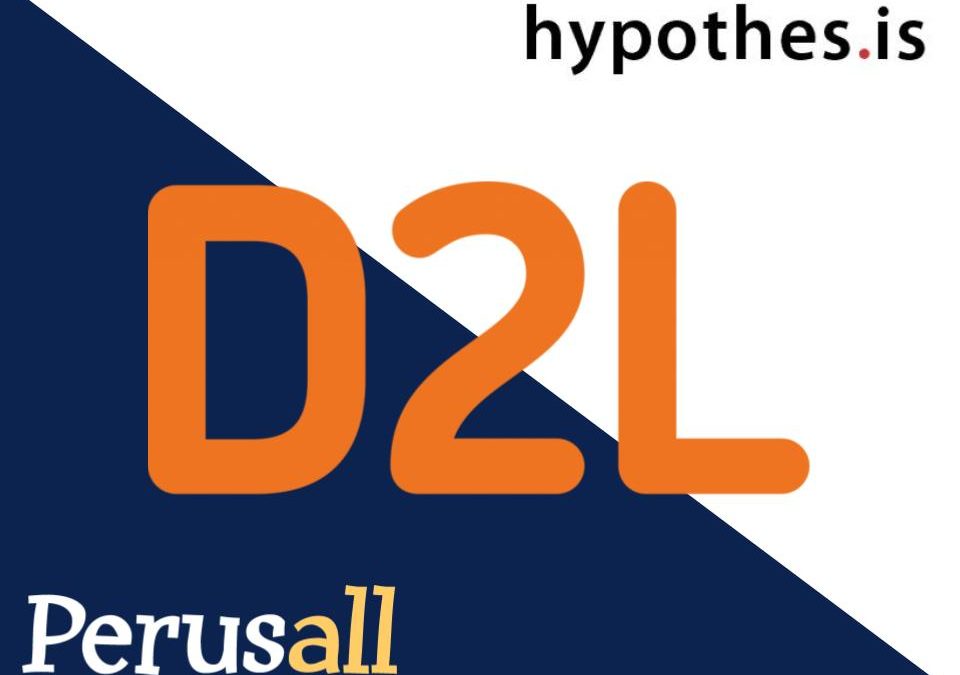Collaborative annotation tools allow you and your students to discuss a text, website, video, or other media through shared marginalia. It’s a form of asynchronous discussion, but instead of taking place within a message board tool (such as D2L Discussions), the conversation happens in comments attached directly on a digital document, web page, or video timeline track. Better still, each discussion thread – a starting comment and subsequent replies – is keyed to a highlighted word or passage, or a specific time on the video timeline.
This has obvious value for online courses, but face-to-face courses can benefit as well: students can begin a discussion in marginalia, getting the benefits of text-based threaded or asynchronous discussions in Hypothes.is. Then, the conversation can continue in the classroom, where students experience the benefits of face-to-face interaction.
In COLI, we recommend that professors try Hypothes.is before firmly deciding to use D2L discussions. Since so many online class discussions focus on texts, Hypothes.is provides an added benefit of bringing the conversation to the text itself! In D2L, we have access to two toolsets: Perusall, and Hypothesis. While the former can handle student annotations on videos, we recommend that professors try Hypothes.is first, since it is simpler to use.
Here’s our video showing students how Hypothes.is works. You can quickly see from it why this is a great discussion mode where the class conversation should happen around a text, such as a .pdf file or website.
This semester we are running virtual workshops where you can learn how to set up Hypothes.is in your D2L course space, and get tips for efficiently managing Hypothes.is conversations. If you’d like to try to deploy it yourself, that’s easy: we have a handy step-by-step guide here. Additionally, Hypothes.is has a great website with plenty of tips on how to use it effectively in coursework.
